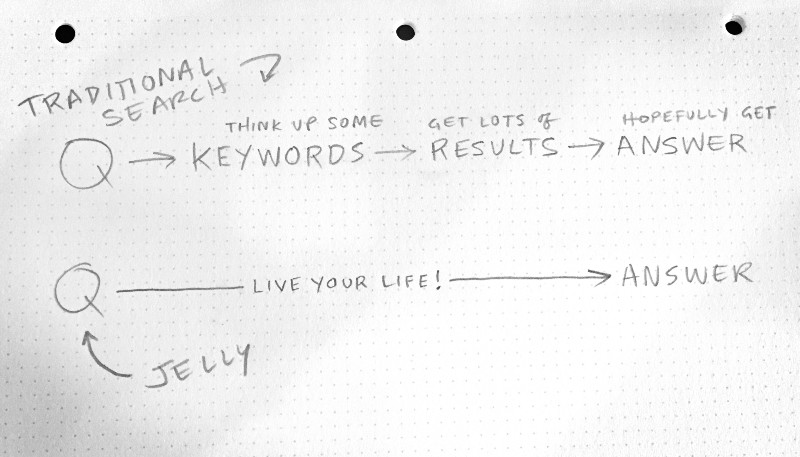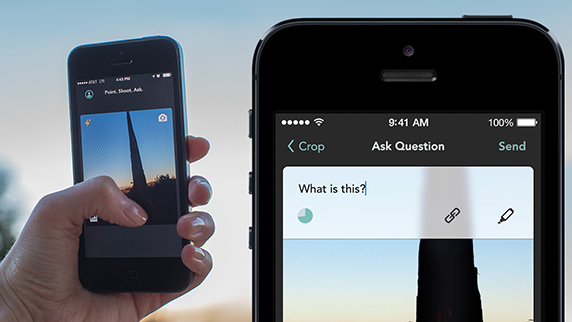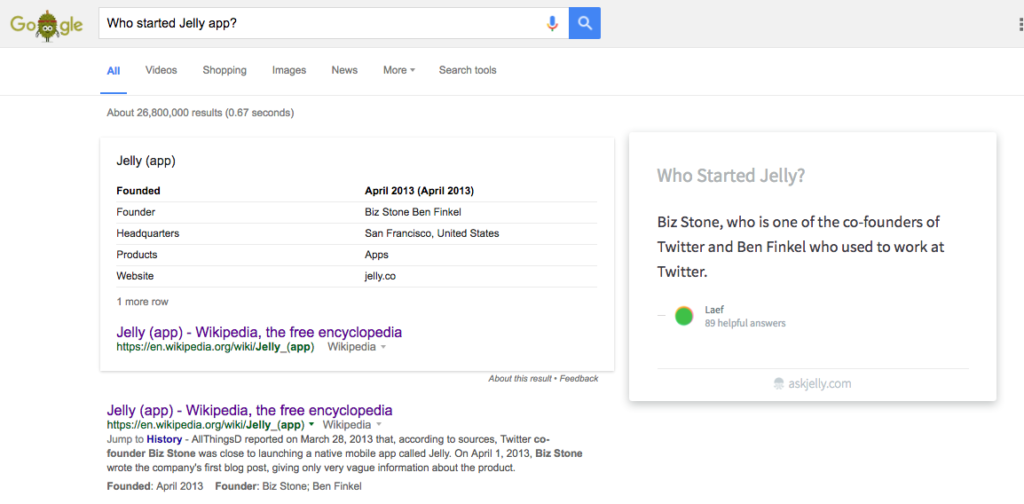From the end user’s experience, using a search engine like Google is amazingly intuitive. So much so, at least one person was even caught saying ‘please’ and ‘thank you’ every time she entered a query. Type in a question, phrase, or a combo of keywords and based on a complex, secretive algorithm, Google will display relevant results before you can blink. That’s their mission: speed and relevancy. It’s how they’ve been able to exceed 3.5 billion queries per day. Usage aside, what happens if you stumble upon something that you are unfamiliar with and can’t really describe the characteristics of it? All of a sudden, searching becomes rather complicated. Wouldn’t it be easier to snap a photo of that something and request an answer?
Without further ado, I introduce you to Jelly, the time-delayed Google with a human being on the other end.
The concept derived from the question,“What would search look like if it were created today?” In 2013, Biz Stone, one of the co-founders of Twitter, and Ben Finkel launched a question-and-answer (Q&A) app called Jelly to battle the likes of Quora, ChaCha and search engines. According to Stone, “Jelly changes how we find answers because it uses pictures and people in our social networks. It turns out that getting answers from people is very different from retrieving information with algorithms. Also, it has the added benefit of being fun.” He goes onto to explain that the only similarity to search engines is that you ask it stuff and it returns answers, but that’s where the similarities end.

Using the app is simple. Let’s say you walked by someone wearing a hockey jersey and were unsure what team it was. You can snap a photo, type your question – “What team is this?” and exclusively distribute it to your social networks. In turn, you could potentially solve this problem with a little more brain power via Google. For example, you could search “List of NHL hockey jerseys” or describe the colors or logo of the jersey. It just comes with a little more effort, but you control the response time. Similar to Quora and even Yahoo Answers (if that’s still a thing), with Jelly, you’ll have to be patient and wait for a response.
Why is it called Jelly?
According to Biz Stone, “We chose the jellyfish to represent our product because it has a loose network of nerves that acts as a ‘brain’ similar to the way we envision loosely distributed networks of people coordinating via Jelly to help each other.”
SEE ALSO: Why is it called Quora?
Jelly begins to surface, again
Although Jelly received a lot of media attention post launch, It struggled to gain mainstream attraction, like the overwhelming majority of mobile apps struggle with. Stone put the project on the back burner and shifted the team’s focus on a new startup called Super, a funky social networking app for sharing things with friends. When interviewed on Recode, Stone said “Super is thriving, people are signing up every day. There’s a very tight-knit, different kind of community that’s formed on there. It’s a thing that’s growing on its own — that’s hard to do. It’s really not a lot of work to keep it up these days with Amazon Web Services. People are having fun with it, so I don’t see any reason to close it down.”

After a two year hiatus, on April 28th, 2016 Stone resurrected the app. Unlike the first version, responses are no longer limited to your social networks and everything is anonymous, which Stone believes will encourage people to ask more sensitive questions. Additionally, during the signup process users can select their subject matter expertise to better route questions. And to take it a step further, there’s a bit of AI involved as well. “Yes, we’ve developed a routing algorithm,” Stone wrote in an announcement post on Medium. “Each query and every answer is freighted with metadata. But all this science is in service of getting you the right responses from the right folks.”

And lastly, if you’d like to receive answers from Jelly while you search, download their Chrome extension. If Jelly can’t find a match, you’ll be able to request an answer from the Jelly community. Do you think the feature enhancements in version 2.0 will keep Jelly afloat this time? Thanks for reading why is Jelly called Jelly! #WhyisitcalledJelly
Adam Lang is the founder and editor of Rewind & Capture. He is passionate about creative marketing, design and brand etymology.






Leave a Reply